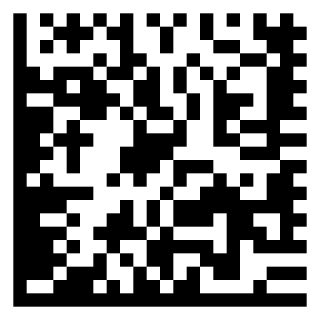
The International Standard Book Number (ISBN) is a numeric commercial book identifier that is intended to be unique. Publishers purchase or receive ISBNs from an affiliate of the International ISBN Agency.

ISO 9660 is a file system for optical disc media. The file system is an international standard available from the International Organization for Standardization (ISO). Since the specification is available for anybody to purchase, implementations have been written for many operating systems.

MPEG-2 is a standard for "the generic coding of moving pictures and associated audio information". It describes a combination of lossy video compression and lossy audio data compression methods, which permit storage and transmission of movies using currently available storage media and transmission bandwidth. While MPEG-2 is not as efficient as newer standards such as H.264/AVC and H.265/HEVC, backwards compatibility with existing hardware and software means it is still widely used, for example in over-the-air digital television broadcasting and in the DVD-Video standard.

An International Standard Serial Number (ISSN) is an eight-digit serial number used to uniquely identify a serial publication, such as a magazine. The ISSN is especially helpful in distinguishing between serials with the same title. ISSNs are used in ordering, cataloging, interlibrary loans, and other practices in connection with serial literature.

A digital object identifier (DOI) is a persistent identifier or handle used to uniquely identify various objects, standardized by the International Organization for Standardization (ISO). DOIs are an implementation of the Handle System; they also fit within the URI system. They are widely used to identify academic, professional, and government information, such as journal articles, research reports, data sets, and official publications. DOIs have also been used to identify other types of information resources, such as commercial videos.
ID3 is a metadata container most often used in conjunction with the MP3 audio file format. It allows information such as the title, artist, album, track number, and other information about the file to be stored in the file itself.
Registration authorities exist for many standards organizations, such as ANNA, the Object Management Group, W3C, and others. In general, registration authorities all perform a similar function, in promoting the use of a particular standard through facilitating its use. This may be by applying the standard, where appropriate, or by verifying that a particular application satisfies the standard's tenants. Maintenance agencies, in contrast, may change an element in a standard based on set rules – such as the creation or change of a currency code when a currency is created or revalued. The Object Management Group has an additional concept of certified provider, which is deemed an entity permitted to perform some functions on behalf of the registration authority, under specific processes and procedures documented within the standard for such a role.
International Standard Musical Work Code (ISWC) is a unique identifier for musical works, similar to ISBN for books. It is adopted as international standard ISO 15707. The ISO subcommittee with responsibility for the standard is TC 46/SC 9.
The International Standard Recording Code (ISRC) is an international standard code for uniquely identifying sound recordings and music video recordings. The code was developed by the recording industry in conjunction with the ISO technical committee 46, subcommittee 9, which codified the standard as ISO 3901 in 1986, and updated it in 2001.
MPEG transport stream or simply transport stream (TS) is a standard digital container format for transmission and storage of audio, video, and Program and System Information Protocol (PSIP) data. It is used in broadcast systems such as DVB, ATSC and IPTV.

A Data Matrix is a two-dimensional code consisting of black and white "cells" or dots arranged in either a square or rectangular pattern, also known as a matrix. The information to be encoded can be text or numeric data. Usual data size is from a few bytes up to 1556 bytes. The length of the encoded data depends on the number of cells in the matrix. Error correction codes are often used to increase reliability: even if one or more cells are damaged so it is unreadable, the message can still be read. A Data Matrix symbol can store up to 2,335 alphanumeric characters.
The PBCore metadata standard was created by the public broadcasting community in the United States of America for use by public broadcasters and related communities that manage audiovisual assets, including libraries, archives, independent producers, etc. PBCore is organized as a set of specified fields that can be used in database applications, and it can be used as a data model for media cataloging and asset management systems. As an XML schema, PBCore enables data exchange between media collections, systems and organizations.
The ISO/IEC 11179 Metadata Registry (MDR) standard is an international ISO/IEC standard for representing metadata for an organization in a metadata registry. It documents the standardization and registration of metadata to make data understandable and shareable.
ISO 8583 is an international standard for financial transaction card originated interchange messaging. It is the International Organization for Standardization standard for systems that exchange electronic transactions initiated by cardholders using payment cards.
The International Standard Text Code (ISTC) is a unique identifier for text-based works. The ISO standard was developed by TC 46/SC 9 and published in March 2009 as ISO 21047:2009. The authority responsible for implementing the standard was assigned to The International ISTC Agency. That Agency ceased operations in 2017. Following a public call for a new organization to support the maintenance and registration of ISTC data in which no other organizations stepped forward, and a subsequent report produced by ISO TC 46/SC 9 on text identification, the ISTC standard was withdrawn from the ISO catalogue of standards in August 2021.
Geospatial metadata is a type of metadata applicable to geographic data and information. Such objects may be stored in a geographic information system (GIS) or may simply be documents, data-sets, images or other objects, services, or related items that exist in some other native environment but whose features may be appropriate to describe in a (geographic) metadata catalog.
The Association of International Collective Management of Audiovisual Works (AGICOA) is a non-profit organization that negotiates, collects, and distributes royalties from the use of audiovisual works, whether via cable, satellite, mobile or any other similar means.

The International Standard Name Identifier (ISNI) is an identifier system for uniquely identifying the public identities of contributors to media content such as books, television programmes, and newspaper articles. Such an identifier consists of 16 digits. It can optionally be displayed as divided into four blocks.
The Entertainment Identifier Registry, or EIDR, is a global unique identifier system for a broad array of audiovisual objects, including motion pictures, television, and radio programs. The identification system resolves an identifier to a metadata record that is associated with top-level titles, edits, DVDs, encodings, clips, and mashups. EIDR also provides identifiers for video service providers, such as broadcast and cable networks.
The International Standard Link Identifier (ISLI), is an identifier standard. ISLI is a universal identifier for links between entities in the field of information and documentation. It was developed by the International Organization for Standardization (ISO) and published on May 15, 2015. ISO/TC 46/SC 9 is responsible for the development of the ISLI standard.







